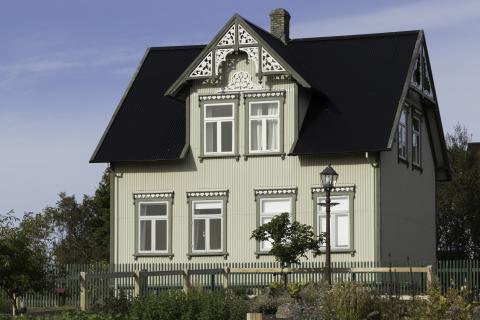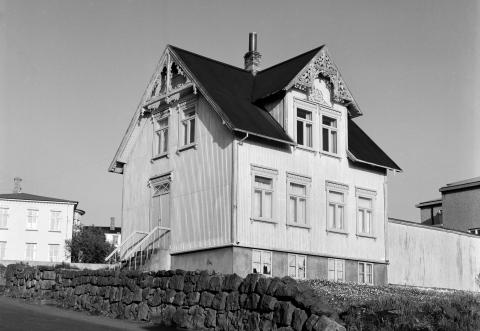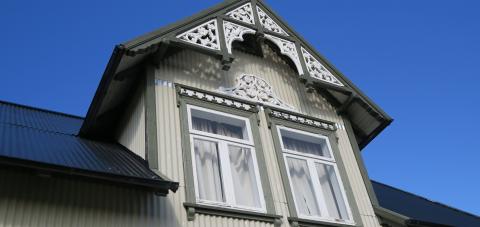
Laufásvegur 31 was built in 1902. It's a timber house with corrugated iron cladding. It belongs to the generation of prefabricated, Swiss-chalet style houses brought over from Norway at the end of the 19th century and the first part of the 20th. The first owner of this house was Hannes Thorarensen, a merchant who lived there with his family until 1967. Afterwards, the British government bought the house and, to make way for the new British Embassy, donated it to the Árbær Open Air Museum. It was moved to the museum in 1972, where it became the residence of the City Antiquarian. In more recent years, it has been used as a staff building. The British Embassy was finally built, in collaboration with the German Embassy, in 2000.

Built in 1902, the house is a timber construction faced with corrugated iron, and is an example of the so-called „Swiss style“ popular in Norway around the turn of the last century. Like others of this type, the house has a steep roof, and the attic walls extend somewhat higher than the level of the attic floor. The eaves of the house are unusually long, and there are carved decorations on the rafters and at the point where they meet on the gable-ends of the house. Window frames are also heavily decorated.
The first owner was a merchant named Hannes Thorarensen. His family lived in the house until 1967, when it was sold to the British Embassy, which donated it to the Árbær Open Air Museum. The house was moved to the Museum in 1972, and now serves as the museum custodian's residence.

